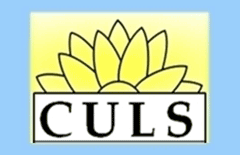Abstract
As the reign of the e-book continues to expand, more emphasis is being placed on e-books within the academic community, particularly with the idea of e-textbooks. Conventional wisdom suggests that in the same way the e-books now hold a major share of the book market, e-textbooks will continue to expand until they are also the dominant mode of textbook publishing. It also would be expected that current students in colleges and universities, who are usually described as digital natives, would embrace this technology wholeheartedly, but indications from currently-available research suggest the situation may not be as clear-cut. Recent studies have focused on the perceived impediments to e-textbook use from the student‟s point of view. Collectively, they provide some guidance for appropriate modification of the technology, and suggest ways in which libraries and instructors might market e-textbooks more effectively.
Creative Commons License

This work is licensed under a Creative Commons Attribution-Noncommercial-No Derivative Works 4.0 License.
Recommended Citation
O'Hare, Sheila and Smith, Andrew JM.
(2012)
"The Customer Is Always Right? Resistance from College Students to E-Books as Textbooks,"
Kansas Library Association College and University Libraries Section Proceedings:
Vol. 2:
No.
1.
https://doi.org/10.4148/culs.v2i0.1615
References
Aaltonen, M., Mannonen, P., Nieminen, S., & Nieminen, M. (2011). Usability and compatibility of e-book readers in an academic environment: A collaborative study. International Federation of Library Associations and Institutions, 37(1), 16-27.
http://dx.doi.org/10.1177/0340035210396775
Appleton, L. (2004). The use of electronic books in midwifery education: The student perspective. Health Information and Libraries Journal, 21, 245-252.
http://dx.doi.org/10.1111/j.1471-1842.2004.00509.x
Book Industry Study Group. (2011). Student attitudes toward content in higher education-volume 1: Consumer attitudes toward e-book reading- volume 2. Retrieved from http://idpf.org/sites/idpf.org/files/digital-book-conference/presentations/DB11_Steve_Paxhia.pdf
Buczynski, J. A. (2006). Faculty begin to replace textbooks with “freely” accessible online resources. Internet Reference Services Quarterly, 11(4), 169-179.
http://dx.doi.org/10.1300/J136v11n04_11
Buczynski, J. A. (2010). Library ebooks: Some can't find them, others find them and don't know what they are. Internet Reference Services Quarterly, 15(1), 11-19.
http://dx.doi.org/10.1080/10875300903517089
Bunkell, J. (2009). E-books vs print: Which is the better value? The Serials Librarian, 56, 215-219.
http://dx.doi.org/10.1080/03615260802698283
Buntrock, R. E. (2011). Ebooks: E-bane or e-blessing? Searcher, 19(3), 38-41.
Carlock, D. M., & Perry, A. M. (2008). Exploring faculty experiences with e-books: A focus group. Library Hi Tech, 26(2), 244-254.
http://dx.doi.org/10.1108/07378830810880342
Centre for Information Behaviour and the Evaluation of Research (2009). Headline findings from the user surveys: Final report. Retrieved from http://ciber-research.eu/download/20091102-exitsurvey.pdf
Connaway, L. S., & Wicht, H. L. (2007). What happened to the e-book revolution? : The gradual integration of e-books into academic libraries. Journal of Electronic Publishing, 10(3).
http://dx.doi.org/10.3998/3336451.0010.302
Ebrary. (2008). Global Student E-book Survey. Retrieved from http://www.ebrary.com/corp/collateral/en/Survey/ebrary_student_survey_2008.pdf
Estelle, L., Milloy, C., Rowlands, I, & Woodward, Hazel. (2009, June). Rethinking electronic publishing: Innovation in communication paradigms and technologies. In S. Mornati & T. Hedlund (Eds.) Proceedings of the 13th International Conference on Electronic Publishing (pp. 381-392), Milano, Italy. Retrieved from http://conferences.aepic.it/index.php/elpub/elpub2009/paper/viewPDFInterstitial/79/36
Folb, B. L., Wessel, C. B., & Czechowski, L. J. (2011). Clinical and academic use of electronic and print books: The Health Sciences Library System e-book study at the University of Pittsburgh. Journal of the Medical Library Association, 99(3), 218-228.
http://dx.doi.org/10.3163/1536-5050.99.3.009
PMid:21753914 PMCid:3133903
Frederickson, L., Cummings, J., Cummings, L., & Carroll, D. (2011). Ebooks and interlibrary loan: Licensed to fill? Journal of Interlibrary Loan, Document Delivery and Electronic Reserve, 21,3, 117-131.
http://dx.doi.org/10.1080/1072303X.2011.585102
Hernon, P., Hopper, R., Leach, M. R., Saunders, L. L., & Zhang, J. (2007). E-book use by students: Undergraduates in economics, literature, and nursing. Journal of Academic Librarianship, 33, 3–13.
http://dx.doi.org/10.1016/j.acalib.2006.08.005
Hull, R., & Lennie, M. (2010, November 15). Why e-textbooks just make sense: An academic and a literary agent explain. Publishers Weekly. Retrieved from http://publishersweekly.com
Joint Information Systems Committee (2009). Dispelling myths about e-books with empirical evidence. Retrieved from www.jiscebooksproject.org
Levine-Clark, M. (2006). Electronic book usage: A survey at the University of Denver. Libraries and the Academy, 6(3), 285-299.
http://dx.doi.org/10.1353/pla.2006.0041
Lonsdale, R., & Armstrong, C. (2010). Promoting your e-books: Lessons from the UK JISC National e-book Observatory. Program: Electronic Library and Information Systems, 44(3), 185-202.
http://dx.doi.org/10.1108/00330331011064212
Marmarelli, T., & Ringle, M. (2009). The Reed College Kindle study. Retrieved from http://www.reed.edu/cis/about/kindle_pilot/Reed_Kindle_report.pdf
Marmarelli, T., & Ringle, M. (2011). The Reed College iPad study. Retrieved from http://www.reed.edu/cis/about/ipad_pilot/Reed_ipad_report.pdf
McCann, A. L., Schneiderman, E. D., & Hinton, R. J. (2010). E-teaching and learning preferences of dental and dental hygiene students. Journal of Dental Education, 74(1), 65-78.
National Association of College Stores (2010). Electronic book and e-reader device report. OnCampus Research Student Panel Survey. Retrieved from http://www.nacs.org/


